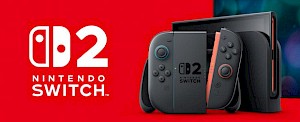News: Wii Designed With Moms in Mind?

Posted 16 Nov 2006 at 14:31 by guest
Miyamoto comments that "Mom Appeal" was a consideration at every stage of Wii's early development.
In a Business Week online special report Nintendo guru Shigeru Miyamoto and longtime designer Kenichiro Ashida discussed aspects of Nintendo's approach in conceptualizing and designing their new Wii console. Here are a few choice excerpts from the interview:
BusinessWeek: How did you approach the redesign of the controller?
Miyamoto: We started work on the Wii around the time the GameCube went on sale in 2001. [Internally, the Wii had the codename "Revolution."] We started with the idea that we wanted to come up with a unique game interface. The consensus was that power isn't everything for a console. Too many powerful consoles can't coexist. It's like having only ferocious dinosaurs. They might fight and hasten their own extinction.
Ultimately, it came down to whether power should be a key element of the console or not. We didn't think it was possible to build a powerful machine for less than 50,000 yen ($450). Not only would it use a lot of electricity, it would need a fan, which meant it would be noisy. Moms would rise up against it.
BusinessWeek: Was making a console that would cost $250 or less the goal from the start?
Miyamoto: Originally, I wanted a machine that would cost $100. My idea was to spend nothing on the console technology so all the money could be spent on improving the interface and software. If we hadn't used NAND flash memory [to store data such as games and photos] and other pricey parts, we might have succeeded.
To answer your questions, yes, we set out to design a console that would sell for less than 25,000 yen ($211). It was a tall hurdle. But unless you start off with a target, you can't control costs and you'll inevitably lose money. Also, we thought a low-cost console would make moms happy.
Though Miyamoto's references of angling for mother's approval were possibly made tongue-in-cheek, it can be seen that maintaining their position as number-one family-friendly console was in the blueprints from Day One. Another gem from the interview:
BusinessWeek: What were the biggest technical challenges in the controller redesign?
Ashida: The controller's wireless technology. It took two years.
Miyamoto: Getting the infrared pointer to work took more than a year. It worked just fine in the ideal environment. But bright lights and sunlight interfered with its accuracy. And we had to test it in rooms of all sizes. The final version wasn't finished until this summer.
Again, you can access the rest of the article right here.






















